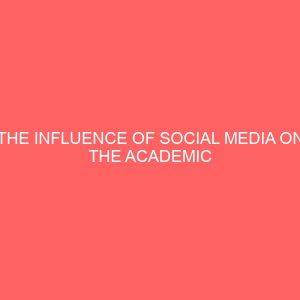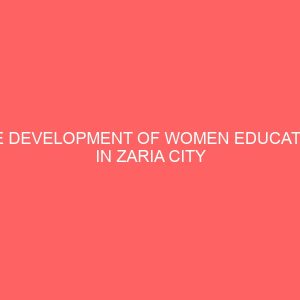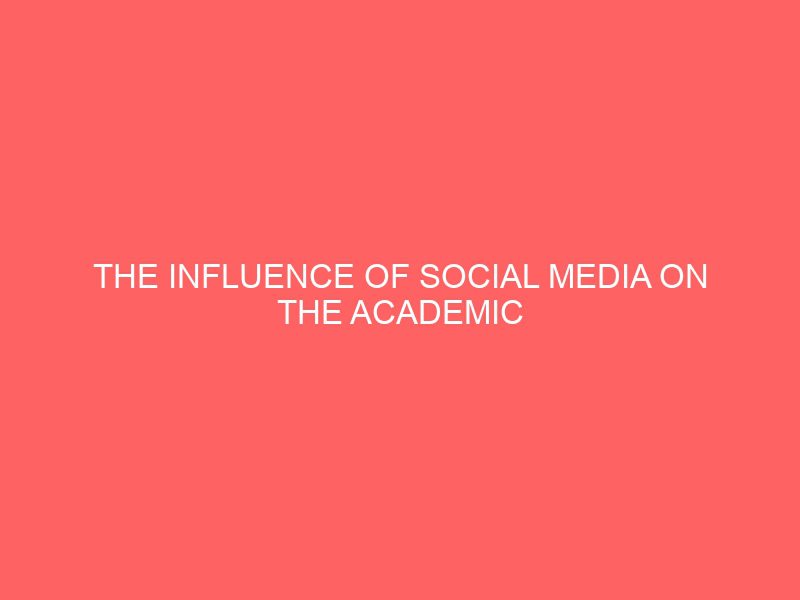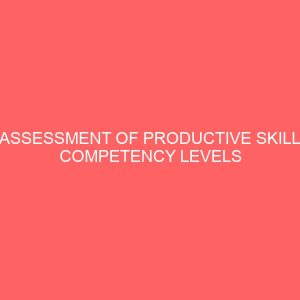Description
CHAPTER ONE
INTRODUCTION
- Background of the Study
According to (Boyd & Ellison 2008), Social networking sites are online communities designed to connect individuals to wider networks of relationships. Whereas a social network is an online service, platform, or a site that focuses on facilitating the building of social networks or social relations among people who share; interests, activities, backgrounds, photographs or real-life connections. Most social network services are web-based and provide a means for users to interact over the internet, such as e-mail and instant messaging.
Furthermore (Boyd & Ellison, 2007) added that the evolutions in technological advancements in the technological world have made the internet an innovative way for students and particularly youths to communicate. Social networks have created a phenomenon on the internet that has gained popularity over the last decade. Users use Social Networking Sites such as Facebook, WhatsApp, Twitter and Myspace to create and sustain relationships with others. In this “information age”, social networking sites seem to be growing in popularity rapidly, especially among senior secondary students (Pempek, Yermolayeva & Calvert, 2009).
According to (Boyd, 2007), the evolution of internet technology has led to its use as the best medium of communication. Two-third of the world’s internet population visits social networking, thus serving as a communication and connection tool, whether from a personal, business or academic perspective. In recent years, social networking sites, like Facebook, WhatsApp, Twitter and Myspace have become the most visited websites in the world, with Facebook topping the list, WhatsApp ranked second, Myspace follows and Twitter soared immediately (Friedman, 2010; Nielsen Market Research, May 4, 2010).
(Boyd, 2007) went on to add that, Student’s participation with technology for social purposes, has become the mainstream of communication method for many people in the past years. In particular, students in senior secondary schools have adopted these forms of communication as the paramount way to keep in touch with family and friends. Facebook, WhatsApp and Twitter are the most popular places for these students to spend their time. What started out as a hobby for some computer literate people has become a social norm and a way of life for people all over the world. Teenagers and young adults have especially embraced these sites as a way to connect with their peers, share information, reinvent their personalities and showcase their social life.
(Zitzman, 2005) affirms that social media has become one of the most communication means in recent time. However, social networking exists so as to provide communication among students and people regardless distance, making it open to people to easily share information, files, pictures, create blogs, send messages and have conversation and researches. These systems are referred to as social, simply because they allow communication in terms of research across the globe. The driving factors for adopting of social media are the progressively ubiquitous access, convenience, functionality and flexibility of social technologies.
According to Karpinski & Duberstein (2010), the use of social network has greatly increased in contemporary times. The risk of its effects on academic performance of so many students that are involve in it is disturbing. In the views of, academic performance is depicted by the grades of students which is a great concern to senior secondary schools. This shows that, the direct relationship between social media usage and academic performance of students in secondary schools need urgent attention. However, the darker side within technological evolution has resulted in dilemmas such as the setback of value of life especially among students who form the majority of users interacting through the use of social networking sites. Online social networking sites focus on building and reflecting social associations among people who share interests, abandon their homework and reading times, in preference for chatting online with friends (Moon, 2011). Many students are now addicted to the online rave of the moment, with Facebook, WhatsApp, Twitter, Instagram, YouTube, to mention a few.
According to (Oche & Aminu, 2010), today most youths, and students possess Facebook accounts. The reason most of them perform badly in school might not be far-fetched. While many minds might be quick to blame the poor quality of teachers, they might have to think even harder, if they have not heard of the Facebook Frenzy. Olubiyi (2012) noted that these days’ students are so engrossed in the social media that they are almost 24 hours online. Even in classrooms, it has been observed that some students are always busy Facebooking, Whatsapping, Twitting, and watching YouTube videos while teaching is going on. Times that ought to be channeled towards learning and innovating has been crushed by the passion for meeting new friends online, and most times students are busy discussing trivial issues. Hence, most students’ academics suffer set back as a result of distraction from the social media. (Sala et al., 2012) observed that the use of these sites also affects students’ use of English and Grammar. The students are used to short forms of writing words in their chat rooms; they tend to forget and use it even in the classrooms and examinations. They use thing like 4 in place of for, u in place of you, ur in place of your, D in place of the, etc. And this could affect their class assessment.
Although, social networking sites has been recognized as an important resource for education today, studies however show that students use social networking sites such as Facebook, WhatsApp, for fun, to kill time, to meet existing friends or to make new ones (Ellison, Steinfield, and Lampe, 2007). Although it has been put forward that students spend much time on participating in social networking activities, with many students blaming the various social networking sites, for their steady decrease in position placement in class (Kimberly et al., 2009). It also shows that only few students are aware of the academic and professional networking opportunities the sites offer. According to Kuppuswamy and Shankar (2010), social networking websites grab attention of the students and then diverts it towards non-educational and inappropriate actions including useless chatting. Whereas on the positive side, (Liccardi, Ovnnas, Massey, kInncineri, Midy & Sakar, 2007) reviewed that the students are socially connected with each other for sharing their daily learning experiences and do conversation on several topics.
Furthermore, most students fail to do their assignments given to them by their teachers and instead engage themselves in their electronic gadgets chatting with their friends on the internet. The also show no concern about reading and studying of their various lesson notes as the find it less important and less interesting than spending their time on internet. This is continuously dwindling their academic performance in school. According to research findings (Jomon, 2012; Moon, 2011; Oye, 2012; Shana, 2012; Young, 2006; Jeong, 2005; Englander, 2000) statistically significant negative relationships exist between time spent by students on social networks and their academic performance. This is taken over the ancient culture of reading all through the night.
Junco, Helbergert and Loken (2011) are of the opinion that social media, internet based tools that promote collaboration and information sharing can be used in academic settings to promote student engagement and facilitate better student learning. They emphasize that student engagement represents the time and effort that students invest in collaborative and educational activities and is often linked with the achievement of positive student learning outcomes, such as critical thinking and individual student development.
Social information processing theory is an interpersonal communication theory which suggests that online interpersonal relationship development might require more time to develop than face-to-face relationships, but when developed it has the same influence as face-to-face communication. This means, the more students use social media, the more they influence their disposition to studies, given the fact that friends from social media, will begin to exert influence on each other. And social media have a long way influence the academic performance of students in students in senior secondary schools in Uyo, both positively and negatively.
1.2 Statement of the Problem
The world today is a global market in which the internet is the most important source of information accessible by everyone from any part of the world even Nigeria. (Sajithra, 2013) stated that since the advent of social media sites in the 1990’s, there has being wide acceptance and growth which for instance in 2010 only Facebook could account for about 500 million active users. Students are not left out in such active participations as they too have friends and make new friends constantly especially as mobile phones are now very accessible at low costs. The advantages of social media are enormous, so also are the problems it has brought to its users, it is common to see people misusing such platforms all in the name of expressing their selves, others get addicted to an extent that they are seen chatting in sensitive and highly organized place like in churches, mosques and even events, some are so carried away that even as they are walking along the highway, they keep chatting.
The trend of smart phones production has complicated the situation, as people no longer need to visit a cybercafé before they send messages and because they have so many friends to chat with now that they tend to use short writings to pass across their messages. Attention has been shifted from visible friends to invisible friends who sometimes are not what they claim to be, and in most cases people tend to be influence by the social life they see online and want the fastest way to become rich and famous.
It is therefore of great importance to study the influence social media has most especially to the academic performance of senior secondary students in Uyo Local Government Area of Akwa Ibom State, who are supposed to be very serious with their studies in order to make good grades and move on with their academic pursuits.
1.3 Purpose of the Study
The purpose of this study generally is to examine the influence of social media in the Academic performance of students in Senior Secondary School in Uyo. Specifically, the study seeks;
- To determine the influence of social media addictiveness on the academic performance of senior secondary school students’ in Uyo Local Government Area.
- To determine the influence of social media networking on the academic performance of senior secondary school students’ in Uyo Local Government Area.
- To determine the influence of social media networking on the academic performance of female senior secondary school students’ in Uyo Local Government Area.
- To determine the influence of social media networking on the academic performance of male senior secondary school students ’in Uyo Local Government Area.
1.4 Significant of the study
This research is very important as knowledge gained will be beneficial to the following set of people in the society:
- Students: This research material is intended to inform students who use and those who don’t use social media networks, as they will understand if social media really is a helpful tool for them or not.
- Parents: This research study will help parents understand what social media entails and if possible put on checks to limit its excess usage.
- Teachers: This research is designed for the current teachers of senior secondary school students to know what they can do to encourage better and proper usage of social media, also check excess usage in order to ensure that their students academics doesn’t suffer neglect.
- Future Researchers: This research aims to add to the already existing wealth of knowledge as regards to the influence of social media in students’ academic performance.
1.5 Research questions
The following research questions were raised;
- Does social media have negative influence on students’ performance?
- Can students use social media to their advantage and excel in their academics?
- Can students access to social media be limited by their teachers and parents.
1.6 Research Hypothesis
From the above-mentioned research questions, some hypotheses shall be tested in this study. They are as follows:
H0: Social Media has no negative influence on student’s performances.
H1: Social Media has negative influence on student’s performances.
H0: Students cannot use social media to their advantage and excel in their academics.
H1: Students can use social media to their advantage and excel in their academics.
1.7 Assumption of the study
Student’s in senior secondary schools are not supposed to be encourages to own phones and use social media networks, this platform are highly addictive and can in-turn encourage a lot of bad habits such as:
- Staying awake when such a student is supposed to be sleeping.
- Making friends with random persons who they don’t know.
- Exposure to negative influences from online friends.
- Distraction when it’s time to read.
- Lack of concentration in class.
With these students who are not careful are likely to be see their grades drop and they will find their selves struggling with over-coming the addiction of always wanting to be online.







Reviews
There are no reviews yet.